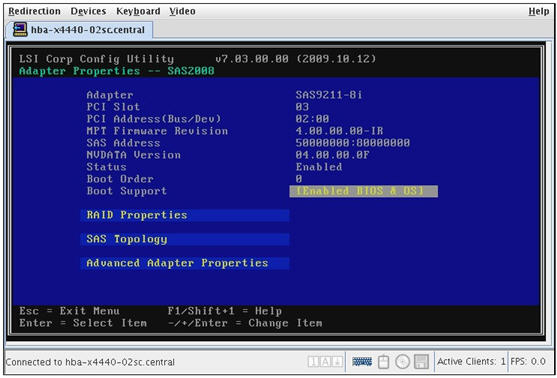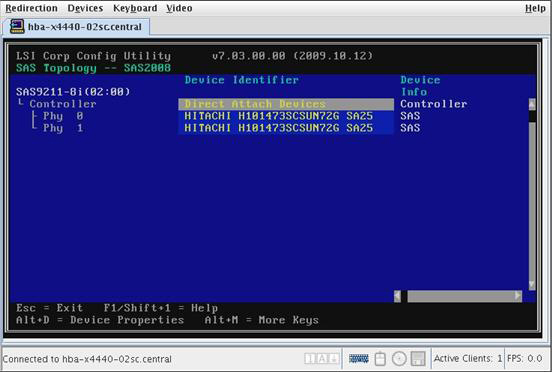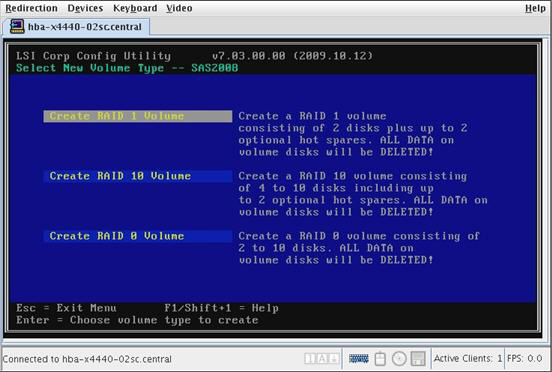| Skip Navigation Links | |
| Exit Print View | |

|
Sun Storage 6 Gb SAS REM HBA Installation Guide For HBA Models SGX-SAS6-REM-Z and SG-SAS6-REM-Z |
| Skip Navigation Links | |
| Exit Print View | |

|
Sun Storage 6 Gb SAS REM HBA Installation Guide For HBA Models SGX-SAS6-REM-Z and SG-SAS6-REM-Z |
Chapter 2 Hardware Installation and Removal
Chapter 3 Creating a Bootable Drive in a Preboot Environment
Overview of Creating a Bootable Drive in a Preboot Environment
Methods For Creating a Bootable Drive
Creating a Bootable Drive (SPARC)
To Create a Bootable Drive (SPARC)
Using the FCode Utility to Create a Bootable Drive (SPARC)
To Prepare to Use the FCode Utility (SPARC)
To Create a RAID Volume With the FCode Utility (SPARC)
Creating an Alias for a Bootable Drive (SPARC)
To Create an Alias for a Bootable Drive (SPARC)
Creating a Bootable Drive (x86)
Using the UEFI Menu to Create a Bootable RAID Volume (x86)
To Verify the Drives and Their Slots (x86)
To Confirm the RAID Volume Creation (x86)
Using the BIOS Configuration Utility (Legacy BIOS Booting) to Create a Bootable Drive (x86)
To Prepare to Use the BIOS Configuration Utility
To Create a RAID Volume With the BIOS Configuration Utility (x86)
Installing the Oracle Solaris OS
To Prepare to Install the Oracle Solaris OS
To Install the Oracle Solaris OS
This section describes how to use the BIOS Configuration utility to set up a drive on an x864 system prior to installing an OS. You can then use the drive as your boot drive upon which to install the OS. This section contains the following topics:
During the boot process, the BIOS initialization banner lists information about the discovered SAS adapters and devices that are attached to the discovered HBAs in the system.
The LSI Corp Config Utility menu is displayed (see LSI Corp Config Utility Menu).
Figure 3-11 LSI Corp Config Utility Menu

|
The Adapter Properties screen is displayed for the selected HBA (see Adapter Properties Screen).
Figure 3-12 Adapter Properties Screen

The SAS Topology screen is displayed (see SAS Topology Screen).
Figure 3-13 SAS Topology Screen

You can now use the BIOS Configuration utility to create a RAID volume on the HBA.
The Select New Volume Type screen is displayed (see Select New Volume Type Screen).
Figure 3-14 Select New Volume Type Screen

You are returned to the Adapter Properties screen, and have successfully created a RAID volume on which to install an OS.
This section describes how to select the bootable drive on which you want to install the OS on an x86 system. This section contains the following topic:
The SAS Topology screen is displayed.